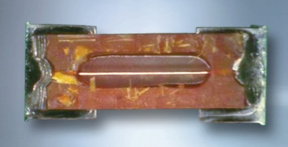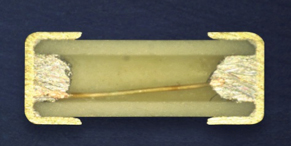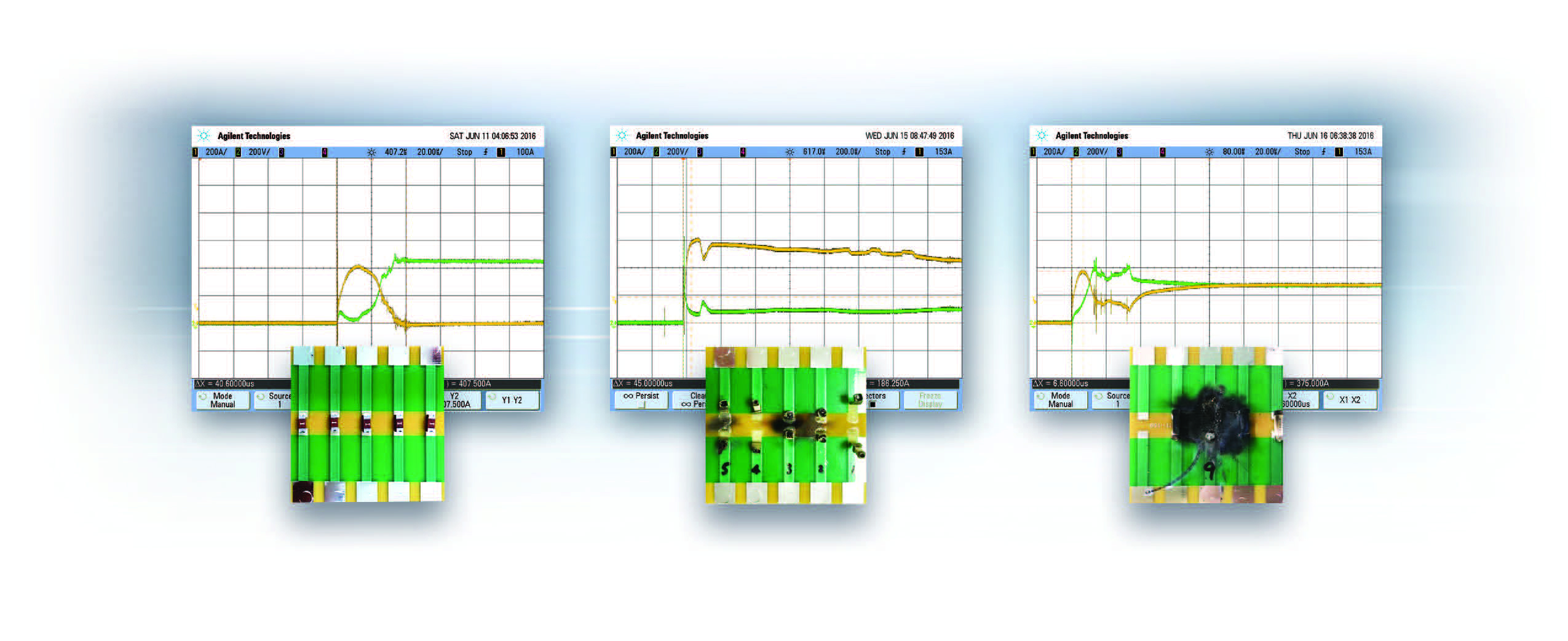Driving improvements for surface mount fuse performance
Automotive applications are driving performance improvements of surface mount fuses. Jeffers Liu, AEM Components, considers solid body and wire-in-air fuses and their suitability for different applications
Surface-mount fuses are widely used and recognised as a reliable means for protecting circuitry from fault conditions, particularly in consumer electronics where size and mechanical stability are critical. The extensive use of electronics in today's 'smart' and connected vehicles call for surface-mount fuses to protect these embedded circuits. Energy storage applications require reliable over circuit protection devices to prevent catastrophic situations. These developments in the automotive industry are driving improvements in the reliability and performance of surface-mount fuses.
There are two common types of one-time surface-mount fuses - solid body (chip) fuses and wire-in-air fuses.
Advances in embedded technologies are driven by the demand for intelligent appliances, high-performing portable and personal electronics, industrial controls and smart automobiles. These applications are constantly adding to the demand for higher energy storage battery systems. The convergence of these two trends is raising the bar in both the performance and reliability of circuit protection devices. Resettable devices are the ideal choice where over-current conditions are the result of a transitory fault condition. In many applications, however, particularly where fault currents can result in serious damage to other circuits or systems, the fuse is still the best choice. While traditional, clip-mounted glass tube fuses are found in a host of applications, and blade-type fuses are ubiquitous in automotive applications, the move toward smaller, distributed and embedded electronic functionality has elevated the demand for high-performance, surface-mount fuses.
Technology drivers
Historically, it is typically one industry's need for technology advances that drives adoption in a range of applications. For example, brighter, more efficient and lighter displays, first developed by the television industry, are now integral part of consumer, commercial, industrial, military and aerospace applications. Now, the demands of the automotive industry are driving advances in circuit protection technology.
While most automobiles and commercial vehicles provide passengers with a comfortable environment, the automotive applications for electronics are subjected to the harshest of environments, with wide temperature variations, shock and vibration, exposure to humidity, water and salt. Traditionally, blade-type automotive fuses located under the dashboard in a fuse box, provided the necessary fault protection. As cars get 'smart' and connected, more embedded and distributed electronics have required PCB- mounted circuit protection. As electric vehicles (EVs) and hybrid vehicles (HEVs), most with high energy lithium battery systems, increase in popularity, the demand for reliable circuit protection devices to protect against catastrophic failures is critical. This has placed emphasis on improving surface-mount fuse technology.
Surface-mount fuse types
Many types of fuses exist, but we will focus on common surface-mount fuse types, the solid body and wire-in-air fuses. In a similar manner as chip inductors and multi-layer ceramic capacitors (MLCCs), surface-mount fuses are packaged in a variety of EIA standard sizes determined by the technology uses and the rating.
Solid body (chip) fuses are used in a very range of space-constrained applications including portable electronics, entertainment systems and disk drives. Current ratings typically start from 125mA. Devices are offered in both slow-blow and fast-acting configurations. Wire-in-air fuses are typically found in higher operating current applications where fast-acting and superior arc-suppression are required. Applications include battery chargers, battery packs and circuits subject to very high fault currents and higher voltages.
Solid body fuses
The two most common structures for solid body (chip) fuses are the multi-layer ceramic type and printed circuit style (see Figure 1). The ceramic type on the left has a co-fired monolithic structure with two layers of fusible material embedded in the structure. In the printed circuit structure on the right, the device is mainly comprised of the epoxy substrate and glass fiber (FR4) structure. The fuse element is bonded to the surface of the pc board and coated with a protective polymer.

Figure 1: Photomicrograph shows cross-sectional view of ceramic and printed circuit style solid body surface-mount fuses
Although the printed-circuit style is most common, the ceramic type offers several distinct advantages. Its monolithic structure is capable of higher current ratings in a smaller package, has a wider operating temperature and has stable operating characteristics in extreme conditions. The structure is less susceptible to mechanical damage.
Mechanical reactions
Figure 2 shows samples of AEM Components SolidMatrix ceramic fuses compared with samples of conventional chip fuses. In the AEM devices, the fuse element is diffused into the ceramic body and there is no external change in the device's appearance. Arcing and surface damage are apparent when the conventional chip fuse is subjected to fault current.
 Figure 2: The monolithic structure of a ceramic fuse (left) absorbs fault current without external damage of conventional chip fuse (right)
Figure 2: The monolithic structure of a ceramic fuse (left) absorbs fault current without external damage of conventional chip fuse (right)
Wire-in-air fuses
Two variations of wire-in-air fuse construction are depicted in Figure 3. The image on the left is a cut-away view of the common construction for this type of fuse where the fusible wire element is housed inside a ceramic tube and connected to the endcaps with solder beads. Right is a cut-away view of an advanced performance wire-in-air fuse, developed by AEM Components. The fuse element in the AEM AirMatrix device, uses solderless construction. It is uniformly straight across the cavity and externally bonded to the endcap.


Figure 3: Conventional fuse (left) compared with AEM's AirMatrix (bottom) wire-in-air fuses
There are several disadvantages associated with conventional wire-in-air fuses. Endcap detachment is a common failure mode in the conventional construction. There is also a lack of uniformity in performance due to the variability in the placement of the wire element inside the ceramic tube. Sample parts were subjected to extreme overload conditions - simulating a catastrophic EV battery short circuit (Figure 4). Under high current-stress conditions, the solder in the ceramic tube can vaporise, and be redeposited, adding a secondary conductive path with potentially serious consequences.
 Figure 4. Sample parts were subjected to extreme overload conditions - simulating a catastrophic EV battery short circuit
Figure 4. Sample parts were subjected to extreme overload conditions - simulating a catastrophic EV battery short circuit
High current/heat causes the solder to vaporise, pressure builds up and the fuse erupts or opens. Once this occurs, the temperature goes down, the solder condenses and is redeposited across the circuit where it presents a potential short-circuit condition.
The AEM Components' fuses withstood 450V/450A conditions (shown left) without any external damage. Conventional fuses (sample A at 250V/250A (centre) and sample B at 450V/450A -shown right) exhibited significant damage to the fuse and collateral damage to the surrounding circuitry. In the waveforms above, the current flow (yellow trace) through the AEM fuse drops to zero while samples A and B each display secondary current flow that ultimately results in PCB damage. The voltage (green trace) shows an open circuit for the AEM fuse with no secondary conduction.
The demands of the automotive industry for reliable and repeatable performance in surface-mount fuses has resulted in the development of the next generation of solid body and wire-in-air devices, with beneficial attributes in many other consumer, industrial and military/aerospace applications.


